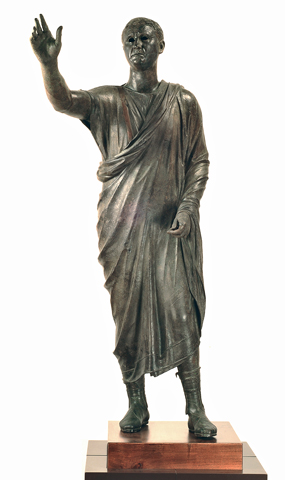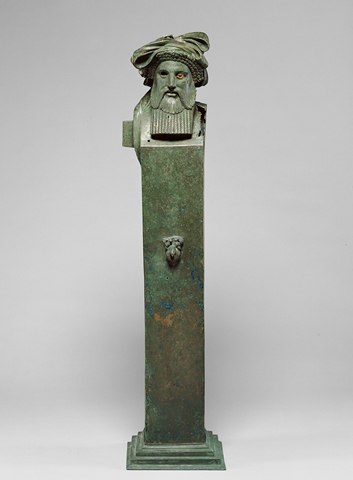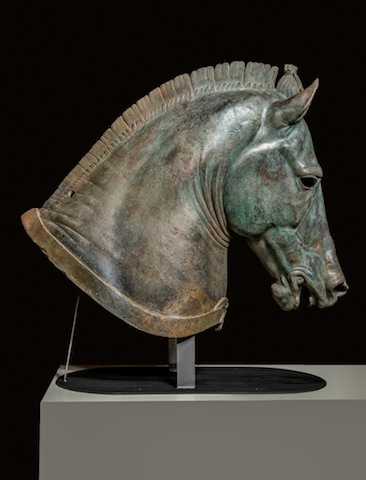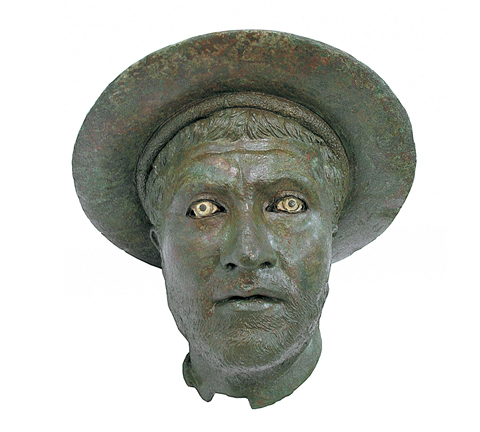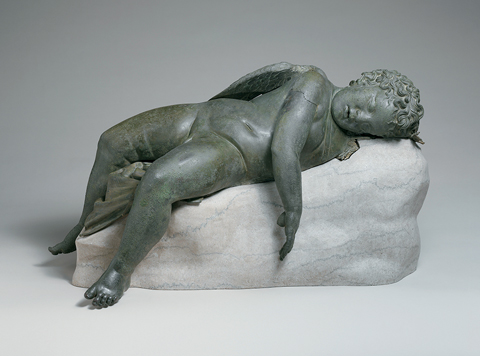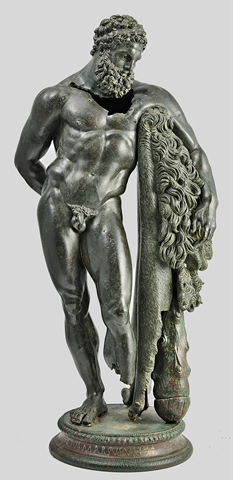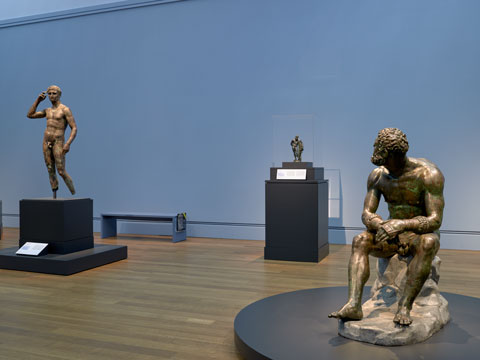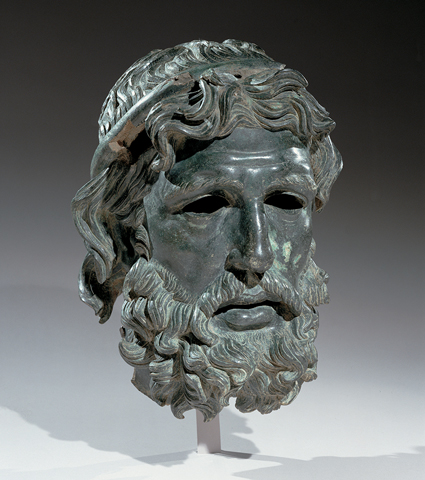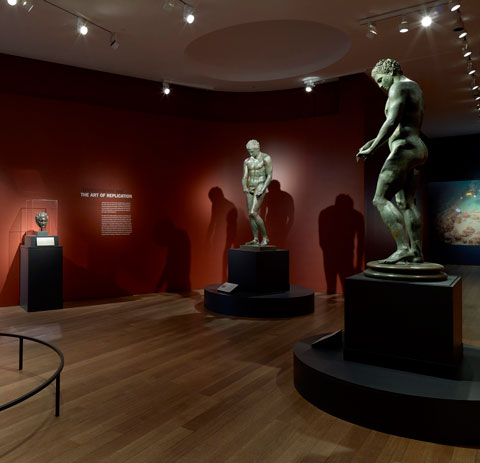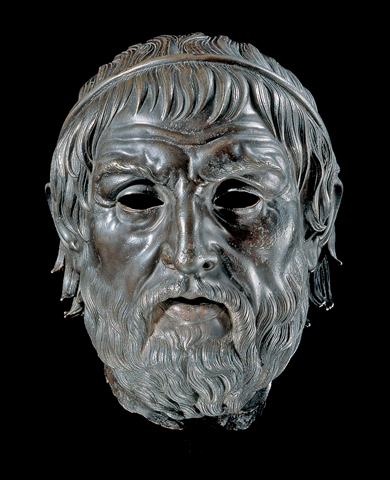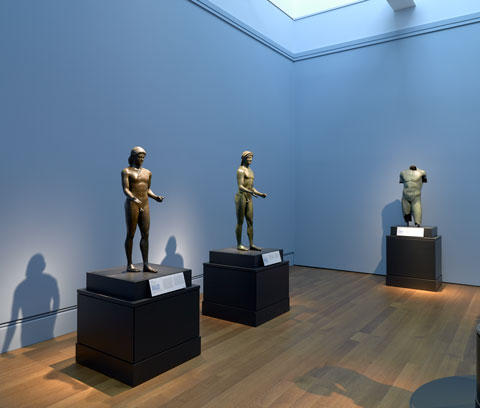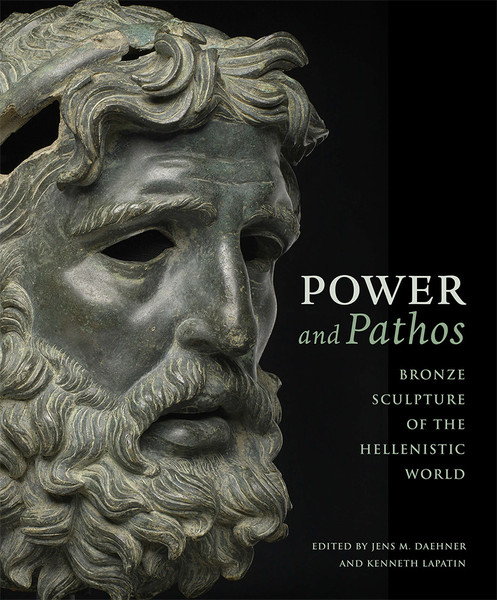Seán Hemingway, curator of Greek and Roman art at The Metropolitan Museum of Art in New York, examines Greek bronze sculpture from its beginnings through the Hellenistic period (323–31 B.C.). He elucidates the achievements of Greek master sculptors by looking closely at a number of outstanding examples of Greek bronze sculpture.
Wednesday, August 5, 7:00 p.m.
Getty Center: Harold M. Williams Auditorium
Power and Pathos: Bronze Sculpture of the Hellenistic World
July 28–November 1, 2015Getty Center
During the Hellenistic period from the death of Alexander the Great in 323 B.C. until the establishment of the Roman Empire in 31 B.C., the medium of bronze drove artistic innovation. Sculptors moved beyond Classical norms, supplementing traditional subjects and idealized forms with realistic renderings of physical and emotional states. Bronze—surpassing marble with its tensile strength, reflective effects, and ability to hold fine detail—was employed for dynamic compositions, dazzling displays of the nude body, and graphic expressions of age and character.
Cast from alloys of copper, tin, lead, and other elements, bronze statues were produced in the thousands: honorific portraits of rulers and citizens populated city squares, and images of gods, heroes, and mortals crowded sanctuaries. Few, however, survive. This unprecedented exhibition unites fifty significant bronzes of the Hellenistic age. New discoveries appear with works known for centuries, and several closely related statues are presented side by side for the first time.
This exhibition was organized by the J. Paul Getty Museum, the Fondazione Palazzo Strozzi in Florence, and the National Gallery of Art in Washington, with the participation of the Soprintendenza per i Beni Archeologici della Toscana. It is supported by an indemnity from the Federal Council on the Arts and the Humanities.
Bank of America is the National Sponsor of this touring exhibition. The Los Angeles presentation is also supported by the Getty Museum’s Villa Council, Vera R. Campbell Foundation, and the A. G. Leventis Foundation.

RELATED EVENTS
A variety of special programs complement the exhibition. All events are free, unless otherwise noted. Seating reservations are required. For reservations and information, please call (310) 440-7300 or see information on planning a visit.
TALKS
Ancient Bronzes as Art Objects: Roman Collectors and “Corinthian Bronzes”
Chris Hallett, professor of Roman art at UC Berkeley, explores how the collecting of ancient bronzes by wealthy Romans impacted the form and use of statuettes known as "Corinthian Bronzes."
Wednesday, September 2, 7:00 p.m.
Getty Center: Harold M. Williams Auditorium
Bronze Sculpture from the Aegean Sea: A Reassessment of Old and New Finds
Marine archaeologist George Koutsouflakis discusses some of the spectacular discoveries made by the Hellenic Ephorate of Underwater Antiquities.
Tuesday, October 13, 7:30 p.m.
Getty Center: Harold M. Williams Auditorium
Learn More
Get Tickets
Muscle into Bronze: Athletics, Athletes, and Athletic Victor Statues in the Hellenistic Aegean
Andrew Stewart, professor of ancient Mediterranean art at UC Berkeley, traces the origins and development of Greek victor statues from the 6th century to the Hellenistic period. He introduces the settings for athletic contests and for the statues, and remarks on the Greek practice of exercising in the nude. Stewart then explains how the statues blend tradition and innovation.
Sunday, October 25, 3:00 p.m.
Getty Center: Harold M. Williams Auditorium
Learn More
Get Tickets
SYMPOSIUM
XIX International Congress on Ancient Bronzes
Archaeologists, art historians, conservators, curators, scientists, and students convene to investigate the artistry, craftsmanship, production, conservation, and science of ancient bronzes. The Congress coincides with the exhibition Power and Pathos: Bronze Sculpture of the Hellenistic World on view at the Getty Center.
The Congress begins Tuesday, October 13 at the Getty Center and continues through Saturday, October 17.
Early bird registration fee $125 (on or before August 3)
Standard registration fee $175 (on or after August 4)
Student registration fee $75
Learn More
COURSES
Bronze Casting Workshop
Learn the art of lost-wax casting in this three-session workshop with sculptor and foundry president Sandy Decker. Explore sculpting, mold making, casting, and finishing techniques to create a small relief medallion cast in bronze. Course fee $235 (includes materials, foundry tour, and bronze casting fees). Complimentary parking at the Getty Center.
Day 1: Tuesday, August 11, 12:30–4:30 p.m. Getty Center, Museum Studios
Day 2: Tuesday, August 18, 12:30–4:30 p.m. Decker Studios Fine Arts Foundry
Day 3: Tuesday, August 25, 12:30–4:30 p.m. Decker Studios Fine Arts Foundry
Repeats Tuesdays, October 20–November 3.
Getty Center: Getty Center and Decker Studios
Get Tickets
Culinary Workshop: Dining in Hellenistic Greece
Discover the tastes of the ancient world in this hands-on workshop exploring the culinary and artistic accomplishments the Hellenistic Greece. Led by Maite Gomez-Rejon of Artbites, participants visit the exhibition Power and Pathos: Bronze Sculpture of the Hellenistic World, learn ancient dining customs, and prepare a class meal inspired by historical recipes and ingredients. Course fee $85. Complimentary parking.
Thursday, August 20, 10:30 a.m.–2:30 p.m.
Friday, August 21, 10:30 a.m.–2:30 p.m.
Getty Center: Private Dining Room
Handling Session: Bronze Casting
How were bronze sculptures made in antiquity? Learn how clay, wax, plaster, and bronze were utilized in lost-wax casting process in this multisensory handling session. Touch tools and materials that will deepen your knowledge of bronze casting, an art form that continues to be practiced today.
Thursdays and Fridays, August 20–November 13, 11:00 a.m.–12:00 p.m.
Getty Villa: Reading Room
Bronze Bodies: The Art of Commemoration
For thousands of years bronze has served as a medium to dignify and dramatize the human body. Join educators Shelby Brown and Christine Spier in a close look at rare Hellenistic bronze statues of mortals, gods, and heroes, and end with an examination of Neoclassical and Baroque bronzes influenced by ancient masterpieces. Course fee $35. Complimentary parking.
Saturday, August 29, 1:00–4:00 p.m.
Getty Center: Research Institute Lecture Hall and Museum galleries
Get Tickets
Portrait Sculpting: Power and Pathos
Join Peter Zokosky for a daylong intensive portrait-sculpting workshop inspired by the power and beauty of Hellenistic bronze sculptures. Sculpt a half-scale portrait head from a live model. Technical guidance, methods, tools, and materials provided. Each participant will take home a sculpted head in non-drying, oil-based clay. Appropriate for all levels from beginners to experienced sculptors. Course fee $135 (includes materials and lunch). Complimentary parking.
Sunday, September 20, 10:30–5:00 p.m.
Getty Center: Museum Studios
Get Tickets
TOURS
Curator’s Gallery Tour
Kenneth Lapatin, associate curator of antiquities, the J. Paul Getty Museum, leads a tour of the exhibition. Meet under the stairs in the Entrance Hall.
Tuesday, August 11 and September 15, 1:30 p.m.
Thursday, October 29, 1:30 p.m.
Getty Center: Museum galleries
Curator’s Gallery Tour
Jens Daehner, associate curator of antiquities, the J. Paul Getty Museum, leads a tour of the exhibition. Meet under the stairs in the Entrance Hall.
Wednesdays, August 5, September 2, and October 7, 1:30 p.m.
Getty Center: Museum galleries
Exhibition Text & Checklist
MOBILE TOUR
Free GettyGuide® Multimedia Player

Pick up a multimedia player free of charge in the Museum Entrance Hall. The multimedia tour is also available for your smartphone; bring your own headphones. Join GettyLink for free Wi-Fi during your visit.
IRIS GETTY BLOG
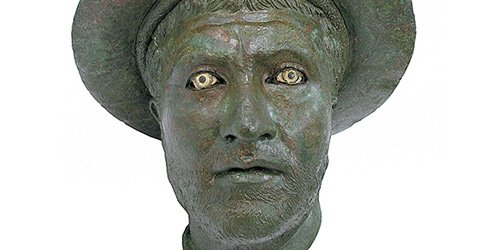
A Brief Introduction to Bronze Sculpture of the Hellenistic World
Getty Iris article by Sarah Waldorf | July 21, 2015
Getty Magazine
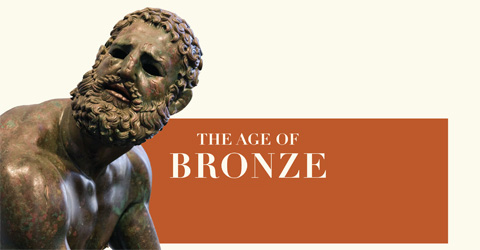
The Age of Bronze: An Unprecedented Gathering of Rare Hellenistic Sculpture at the Getty Center
The Getty magazine article | Summer 2015
PRESS KIT
OTHER VENUES
Upcoming
National Gallery, Washington, D.C.
December 13, 2015-March 20, 2016
Previous
Palazzo Strozzi, Florence, Italy
March 14–June 21, 2015

